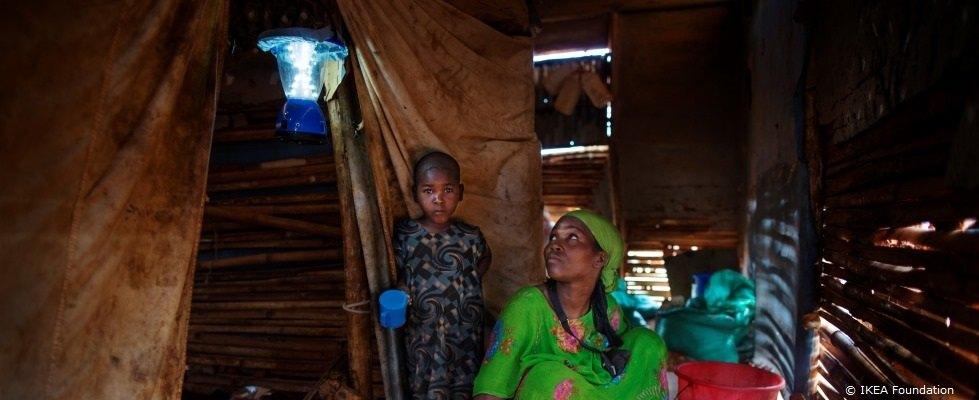
It is easy to mock Ikea for its cheap home decor and the missing screws in its assemble-yourself furniture packs, which many of us did not discover until that one-hour drive home from the blue-and-yellow superstore. But there are no screws loose in the company’s commitments to renewable energy, from wind power investments to solar panels atop its stores — the latter of which are available for purchase at some stores, too.
Now the company says it is ratcheting up its pledge to the tune of €1 billion ($1.1 billion) in new projects.
As announced last week, 60 percent of that commitment is for additional investments in clean energy projects. The remainder, which will go toward projects in areas most affected by climate change, will be through the company’s eponymous foundation.
According to Ikea, this €600 million pledge builds on the €1.5 billion the company has invested in wind and solar projects since 2009. The company already has over 300 wind turbines and about 700,000 solar panels at various stores worldwide. This new investment will overwhelmingly go toward wind power projects in the next five years; about €100 million of that will go toward solar installations, the company said. Considering how far the price of renewables have fallen in recent years, Ikea will get far more bang for its euro (or dollar, as it has made big gains on the euro in recent months).
It is actually through the Ikea Foundation, however, where this new pledge could have an even more meaningful impact. Renewables have proven to become the energy of choice in remote areas lacking grid access. Whether they are an easily copied, low-tech idea like Liter of Light or a pay-as-you-go innovation similar to M-Kopa, technologies such as solar have come a long way. Many of Ikea’s programs have focused on young women’s empowerment, disaster relief and refugee assistance, so this is a new trajectory for the foundation.
Ikea was not specific about how it will spend this €400 million, but it has said it will work with poor communities to implement clean energy technologies in schools, homes and businesses. The foundation’s close work with a bevy of well-known NGOs could turn what is now just a pledge into a huge success benefiting people who especially would benefit from access to energy.
Will this investment make much a difference? Ikea has done a fantastic job touting its environmental record, but its overall performance on the sustainability front has been mixed. The company was among the first retailers to sell compact fluorescent (CFL) and light-emitting diode (LED) light bulbs at a cheap price, which helped the push-to-start phasing out of incandescent bulbs. Its supply chain, however, has proven troublesome in the past, as some of its manufacturing practices and labor policies have raised eyebrows.
Nevertheless, considering the performance of the overall retail sector, Ikea once again has shown it is more of a leader than a follower.
Image credit: Ikea Foundation

Leon Kaye has written for 3p since 2010 and become executive editor in 2018. His previous work includes writing for the Guardian as well as other online and print publications. In addition, he's worked in sales executive roles within technology and financial research companies, as well as for a public relations firm, for which he consulted with one of the globe’s leading sustainability initiatives. Currently living in Central California, he’s traveled to 70-plus countries and has lived and worked in South Korea, the United Arab Emirates and Uruguay.
Leon’s an alum of Fresno State, the University of Maryland, Baltimore County and the University of Southern California's Marshall Business School. He enjoys traveling abroad as well as exploring California’s Central Coast and the Sierra Nevadas.














